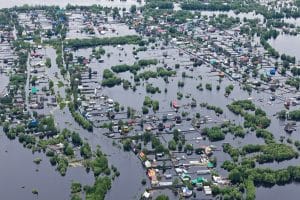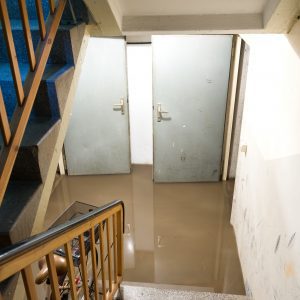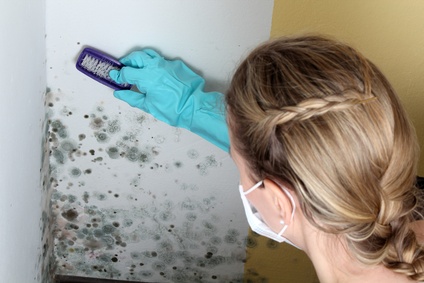What are the Different Types of Flooding That Can Occur in Your Home?
Water is pervasive. In fact, water covers 71 percent of the earth’s surface. It’s no surprise that water can intrude into residential homes. FloodingFlooding is the overflow or accumulation of water in areas t... More of any kind will cause severe water damage if left unrepaired. Here are five different types of floodingFlooding is the overflow or accumulation of water in areas t... More that can affect a home.
The oceans contain 96.5 percent of all the water on earth. Rivers and lakes also hold a significant amount of water. In the air, water can be found as water vaporVapor is the gaseous form of a substance that is typically l... More. In cold regions, water remains frozen atop icecaps and in glaciers. Water also flows through properties via indoor plumbing.
Water from any of these sources can enter a home uninvited and leadLead is a heavy metal that can be toxic to humans, especiall... More to water damage. The extent and type of destruction depend on the specific type of flood. Understanding the different types of floodingFlooding is the overflow or accumulation of water in areas t... More can help homeowners better prepare for disasters and safeguard their properties.
Types of floodingFlooding is the overflow or accumulation of water in areas t... More
-
Coastal FloodingFlooding is the overflow or accumulation of water in areas t... More
As mentioned, most of the earth’s water are located in the oceans. Coastal floodingFlooding is the overflow or accumulation of water in areas t... More has a dire effect on coastal properties, since they are built in close proximity to the ocean. The water from the ocean travels inland via waves, tides, storm surges, or heavy rainfall.
Due to climate change, the risk of coastal floodingFlooding is the overflow or accumulation of water in areas t... More is expected to rise. Sea levels are increasing because of the rise in temperatures from climate change. The number of coastal floods is increasing, and their effects are worsening—essentially lasting longer and extending further inland.
-
River FloodingFlooding is the overflow or accumulation of water in areas t... More
The water levels in rivers, lakes, or streams can rise, sending water over the banks and onto neighboring lands. Excessive rain or snowmelt can trigger river floodingFlooding is the overflow or accumulation of water in areas t... More. Several factors determine the severity of river floods, including the intensity and duration of rainfall.
River floodingFlooding is the overflow or accumulation of water in areas t... More can potentially leadLead is a heavy metal that can be toxic to humans, especiall... More to dam or dike breaks. A disaster like the rupture of a dam can leadLead is a heavy metal that can be toxic to humans, especiall... More to significant property damage to homes and businesses built in the vicinity. Fortunately, most causes of river floodingFlooding is the overflow or accumulation of water in areas t... More are predictable, allowing time for residents to evacuate safely.
-
Flash FloodingFlooding is the overflow or accumulation of water in areas t... More
Flash floods are preceded by major events, like severe thunderstorms, tropical storms, hurricanes or even mudslides and broken dams or levees. The floods gain momentum within six hours of these events. Several environmental conditions impact the severity of the flash floods.
With less soil to absorb the water from a flash flood, urban areas are more prone to significant damage. Similarly, areas that have been stricken with drought are at risk for flash floodingFlooding is the overflow or accumulation of water in areas t... More; the dry soil is unable to quickly absorb the water, which leads to water runoffRunoff is water from rain or other sources that flows over s... More in low-lying areas.
-
GroundwaterGroundwater is water that exists beneath the earth’s surfa... More FloodingFlooding is the overflow or accumulation of water in areas t... More
Substantial rainfall can cause groundwaterGroundwater is water that exists beneath the earth’s surfa... More floodingFlooding is the overflow or accumulation of water in areas t... More, whereby water flows into streets and buildings in nearby areas. Both rural and urban areas are equally prone to groundwaterGroundwater is water that exists beneath the earth’s surfa... More floods. Unlike river floodingFlooding is the overflow or accumulation of water in areas t... More, groundwaterGroundwater is water that exists beneath the earth’s surfa... More floodingFlooding is the overflow or accumulation of water in areas t... More is a slow process, occurring days, weeks, or months after heavy rainfall.
Although groundwaterGroundwater is water that exists beneath the earth’s surfa... More floodingFlooding is the overflow or accumulation of water in areas t... More happens gradually, the catastrophic effects can last for weeks or months. Fortunately, however, the slow pace at which groundwaterGroundwater is water that exists beneath the earth’s surfa... More floodingFlooding is the overflow or accumulation of water in areas t... More occurs gives residential property owners time to remove their belongings to an elevated, safer, and dryer area.
-
SewageSewage is wastewater containing biological and chemical cont... More FloodingFlooding is the overflow or accumulation of water in areas t... More

SewageSewage is wastewater containing biological and chemical cont... More systems and treatment plants can be overwhelmed by unexpected heavy rainfall and break down, which leads to untreated sewageSewage is wastewater containing biological and chemical cont... More water being released into bodies of water. Sewage water can leak through the pipes and come up through the sinks, showers, and toilets.
Basement cracks can allow sewer water inside. Plumbing systems that are left unmaintained can burst and send sewageSewage is wastewater containing biological and chemical cont... More into the property. Outside the home, tree roots can cause problems with the sewer line, blocking it and preventing wastewaterWastewater is used water that contains contaminants, chemica... More from flowing to its intended destination.
FloodingFlooding is the overflow or accumulation of water in areas t... More is a major disaster for property owners in the United States. All it takes is an inch of floodwater to cause $25,000 in damages to the home. Some types of floodingFlooding is the overflow or accumulation of water in areas t... More, especially those cause by nature, cannot be prevented. However, property owners can minimize the damage.
Homeowners should know the Base Flood Elevation (BFE), which is how high water is expected to rise in high-risk flood areas. Elevate the appliances, like the water heater, as well as electrical systems, furnaces and other utilities, at least 12 inches above the BFE.
Replace the carpets with tiles, which are a more flood-resistant surface than carpeting. Floodproofing the basement by installing a sump pumpA sump pump is a pump installed in a basement or crawlspace ... More and sealing the walls with waterproofingWaterproofing is the application of materials or coatings de... More compounds is also advised. Installing flood-resistant insulationInsulation is a material used in buildings to reduce the tra... More and drywall helps limit the flood damage.
Building owners should also consider installing flood vents in enclosed areas, such as the garage and the foundation walls. The vents allow water to flow through and drain out, thereby reducing the extent of damage. Invest in a sewer backflow valve to prevent sewageSewage is wastewater containing biological and chemical cont... More backup disasters.
Water Damage in the home
Water damage from floodingFlooding is the overflow or accumulation of water in areas t... More will adversely affect the structural integrity of the home. Wood rot, swelling, and warpingWarping is the bending, twisting, or distortion of materials... More, as well as moldMold is a type of fungus that grows in damp or humid conditi... More growth, can be the unwanted outcomes of water damage. Avoid extensive water damage issues by consulting a water damage restorationWater damage restoration is the professional process of clea... More professional.
A local water damage restoration company will return your water damaged home or business to its pre-loss condition fast. Technicians are certified and trained to repairRepair is the act of fixing or restoring damaged property, m... More water damaged properties swiftly, so that you can return to daily life as soon as possible.
The cleanup process starts with an assessment of the water damage. Skilled crews extract all the excess moisture using advanced water extraction equipment. An anti-microbial solutionA solution is a homogeneous mixture of two or more substance... More is applied to ensure the safety of the building. The property is dried with powerful air movers and dehumidifiers.
RestorationRestoration is the process of returning a property to its pr... More professionals provide comprehensive water damage cleanup services, including drywall replacement, carpet dryingDrying is the process of removing moisture from materials, s... More, moldMold is a type of fungus that grows in damp or humid conditi... More removal, and deodorization. Content cleaning and pack out services are options available to property owners. They also offer emergency board up services and debris removal when needed.












